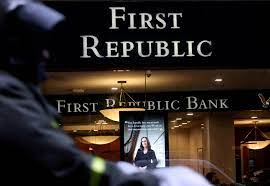First Republic Bank has been under intense pressure since the collapse of Silicon Valley Bank last month. In just two weeks, the bank saw a massive $100 billion withdrawal, leaving it in a precarious financial situation.
As of March 9, 2023, total deposits were $173.5 billion, according to the bank’s statement. This is a significant decrease from the $102.7 billion deposits reported in April 2021.
To reduce its short-term borrowing, the bank secured a time deposit of $30 billion from some of the largest US banks.
However, it still owes $104 billion to the Federal Reserve, the Federal Home Loan Bank, and JP Morgan, after borrowing as much as $138 billion in March.
In Q4 2022, the bank had borrowed only $14 billion. Despite borrowing heavily, it has only $14 billion in highly liquid assets such as cash or unencumbered investment securities.
The bank has invested $35 billion in securities, leaving the balance sheet unclear about where the remaining $50 billion of the borrowed $104 billion went. All of the so-called deposits are now borrowed money from the Fed and JP Morgan.
The bank’s plan to reduce its workforce by 20%-25% in the current quarter while lowering executive compensation comes after a disastrous Q1 2023.
Revenues were down 13% to $1.2 billion, net interest income was down 20% to just under $1 billion, diluted earnings per share were down 40%, and net income was down 33% to $270 million.
With net income remaining at these levels, it could take up to 104 years to pay off the $104 billion loans, assuming the bank uses its entire profits every year.
However, the bank has $170 billion in loans it has made, which it can use to pay off its own loans as they are paid off, potentially making the situation more manageable.



